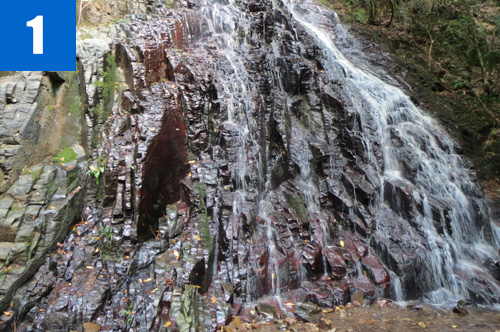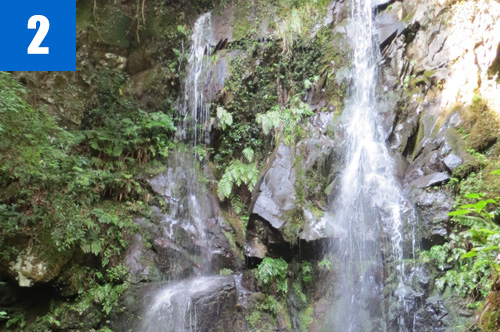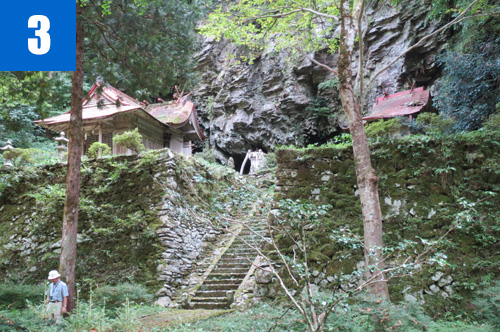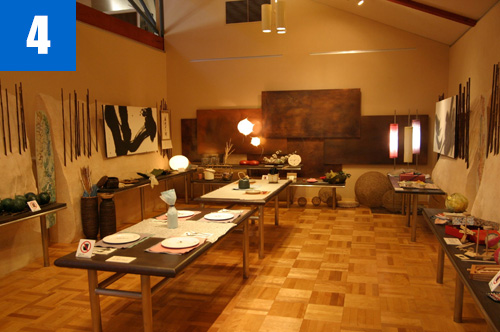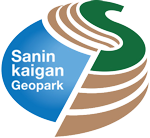A gently sloping plateau was formed by andesite lava ejected from a point near Mt. Hachibuse after Sea of Japan was formed (in the Pliocene Epoch). This is a Geosite with effluent water. Many waterfalls were formed on the steep cliffs, where the valley bottom plains, formed by the erosion of the plateau by rivers, and the plateau meet. In this Geosite there is Mt. Otakisan, which is known as a “Sacred Place in the San’in region.”
(1)Narutaki Waterfalls
This waterfall is a sacred place worshipped by people. There are six waterfalls along the steep cliff (about 110 m from the top to the bottom of the cliff) on the mountainside.
(2)Fudo Waterfalls (Ichi-no-taki Waterfalls)
This waterfall is the most important sacred place on Mt. Otakisan. A statue of Fudomyojin is placed there. The waterfall is also called Ichinotaki Falls.
(3)The stone caves of Komori Shrine
These caves were formed by the erosion of the basement of the andesite lava ejected from the point near Mt. Hachibuse after the Sea of Japan was formed (in the Pliocene Epoch). A shrine is built as if it were embedded in the cave. The largest cave is the north cave, 20 meters wide width, 4 meters high, and 7 meters deep at the deepest point.
(4)Aoya Washi Studio (Inshu Japanese paper)
The origin of Inshu Paper is unknown, but it is believed that the paper has a history of about 1,300 years, as it is mentioned in Engishiki, a book written in the Heian Period. Inshu Paper is well-known throughout Japan as paper suited to calligraphy. The Aoya Paper Plant suggests new ways of using this paper for art and other purposes. At this plant, visitors can experience paper making.

